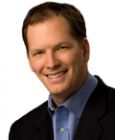Sleep
CDC Report: 9 Million Using Prescription Sleep Aids
The US popularity of prescription sleeping pills—and a look at other treatments
Posted August 29, 2013

Have you used a Rx sleeping pill in the past month?
Have you taken a sleeping pill in the past month? If so, you’ve got plenty of company. In the past 30 days, approximately 9 million adults in the United States—that’s 4 % of the population— used prescription medication to help their troubled sleep. This is just one of the findings from a newly-released Centers’ for Disease Control report on prescription sleep-aid use in the United States.
This is the first U.S. government study to investigate use of prescription sleep medication. Until now, data on sleep aid use has come primarily from rates of prescriptions sold and by market research, which for years have formed the basis of reports of increasing demand for prescription sleep aids. Now, for the first time, we have results from a national, public health study addressing the issue of prescription sleep medicine. These CDC results provide important information not only about how commonly these medications are being used, but also about some of the social and demographic factors that are associated with their use:
Age: Prescription sleep aid use increases with age. Sleep medication use was lowest among the youngest age group (20-39)—roughly 2% of young adults had used prescription sleep aids in the past 30 days. Among adults 50-59 that figure rose to 6%, and to 7% among adults 80 and older.
Gender: Women are significantly more likely to use prescription sleep medication than men. Five percent of women reported using a prescription sleep aid in the past 30 days, compared to 3.1% of men.
Race and ethnicity: Non-Hispanic white adults reported substantially higher use of prescription sleep medication than non-Hispanic black adults, and Mexican-American adults. Among non-Hispanic whites, 4.7% reported using prescription sleep aids, compared to 2.5% among non-Hispanic blacks, and 2.0% among Mexican-Americans.
Education: The likelihood of sleep medication use rises with education: 4.4% of adults with education beyond high school reported using sleep aids, compared to 3.9% of adults who graduated from high school and 3.0% of adults who did not complete high school.
Not surprisingly, rates of prescription sleep medication are highest among people who report the most difficulty with their sleep:
- Adults who reported sleeping no more than 5 hours per night had the highest rates of prescription sleep aid use. People who slept 9 or more hours also used prescription sleep aids with greater frequency than those who reported sleeping within the recommended range of 7-8 hours per night.
- Adults who have been diagnosed with sleep disorders showed dramatically higher rates of prescription medication use, as did adults who said they told their physicians about having trouble sleeping. More than 16% of adults with a diagnosed sleep disorder used prescription sleep medications in the past 30 days. Almost 13% of adults who had reported sleep problems to their doctors were using sleep medications.
What are we to make of these results? The prevalence of sleep medication use and, in particular, the very high rates of use among people with sleep disorders and poor sleep suggest to me that we need to take a closer look at how to prescribe sleep medication responsibly and appropriately. We also need to pay more attention to how best to use prescription sleep aids in conjunction with other treatments for sleep. Prescription sleep aids can be very effective for short-term use, in breaking the cycle of insomnia and poor sleep. Once that cycle is broken, other therapies such as Insomnia-Specific Cognitive Behavioral Therapy (CBT) can help people learn how to sleep well naturally, while gradually reducing sleep medication. On its own and in conjunction with short-term medication use, CBT has been shown effective in treating insomnia and poor sleep. CBT for sleep can include a range of treatment strategies, including sleep education and the development of strong sleep hygiene, use of stimulus control, sleep restriction and relaxation techniques, as well as psychotherapy. Relying on prescription sleep medications alone deprives patients of the opportunity to develop and renew their own sleep skills, which are critical to their long-term health. In addition, more information is needed about the full range of natural and effective alternative sleep aids that are available.
We’ll no doubt be talking a lot more about these findings in the days and weeks to come. With an estimated 50-70 million Americans suffering from disordered and disrupted sleep, this is a serious public health problem that isn’t going away any time soon. Prescription sleep medication, used responsibly, can be an important part of a sleep solution. But it mustn’t be the only part.
Sweet Dreams,
Michael J. Breus, PhD
The Sleep Doctor®
Image courtesy of ponsulak at www.FreeDigitalPhotos.net


